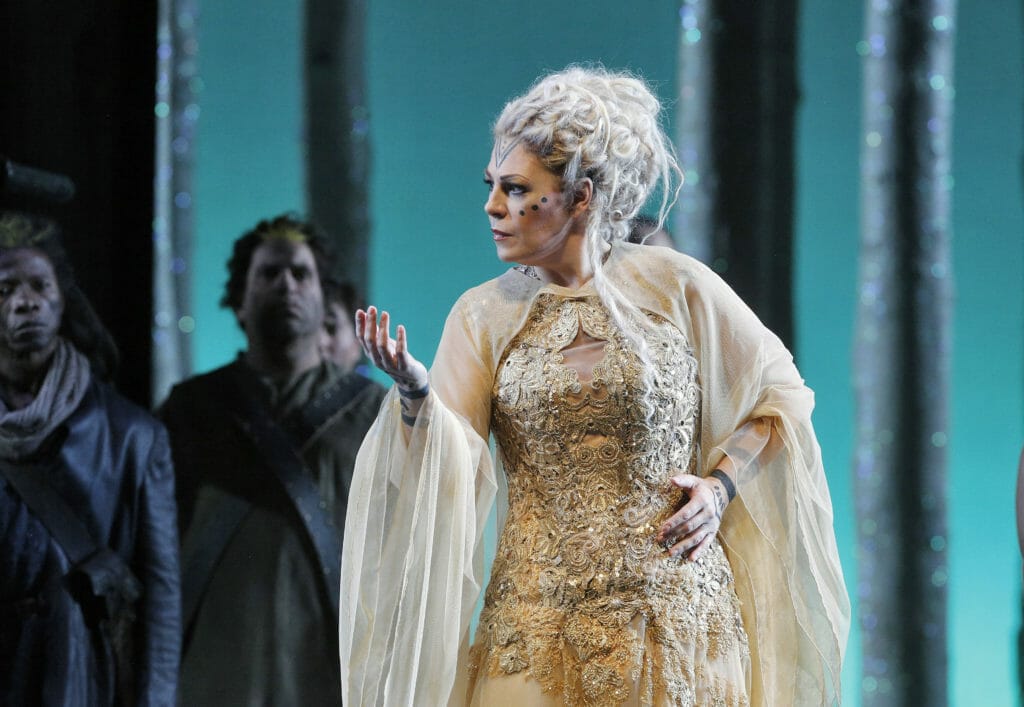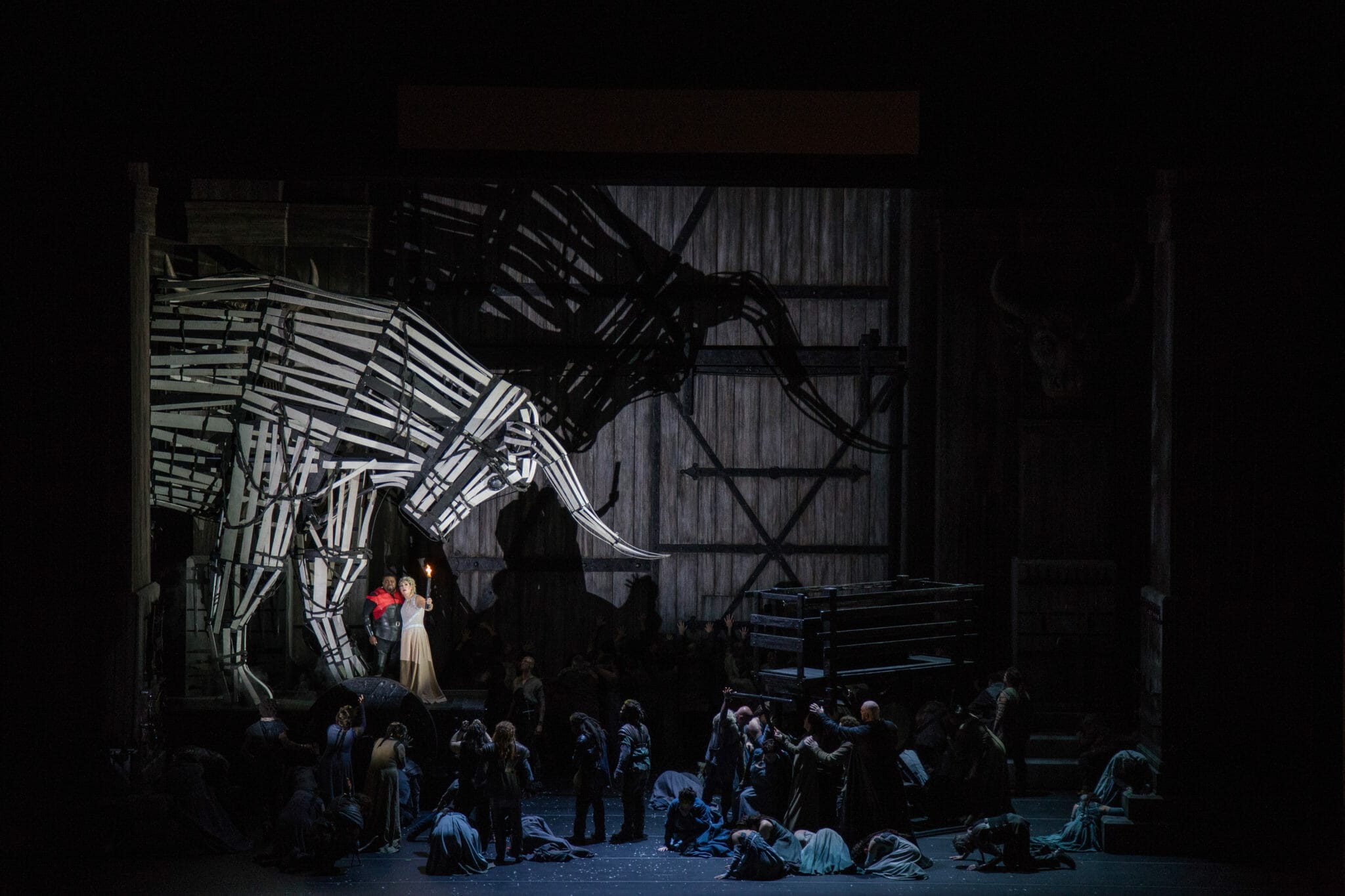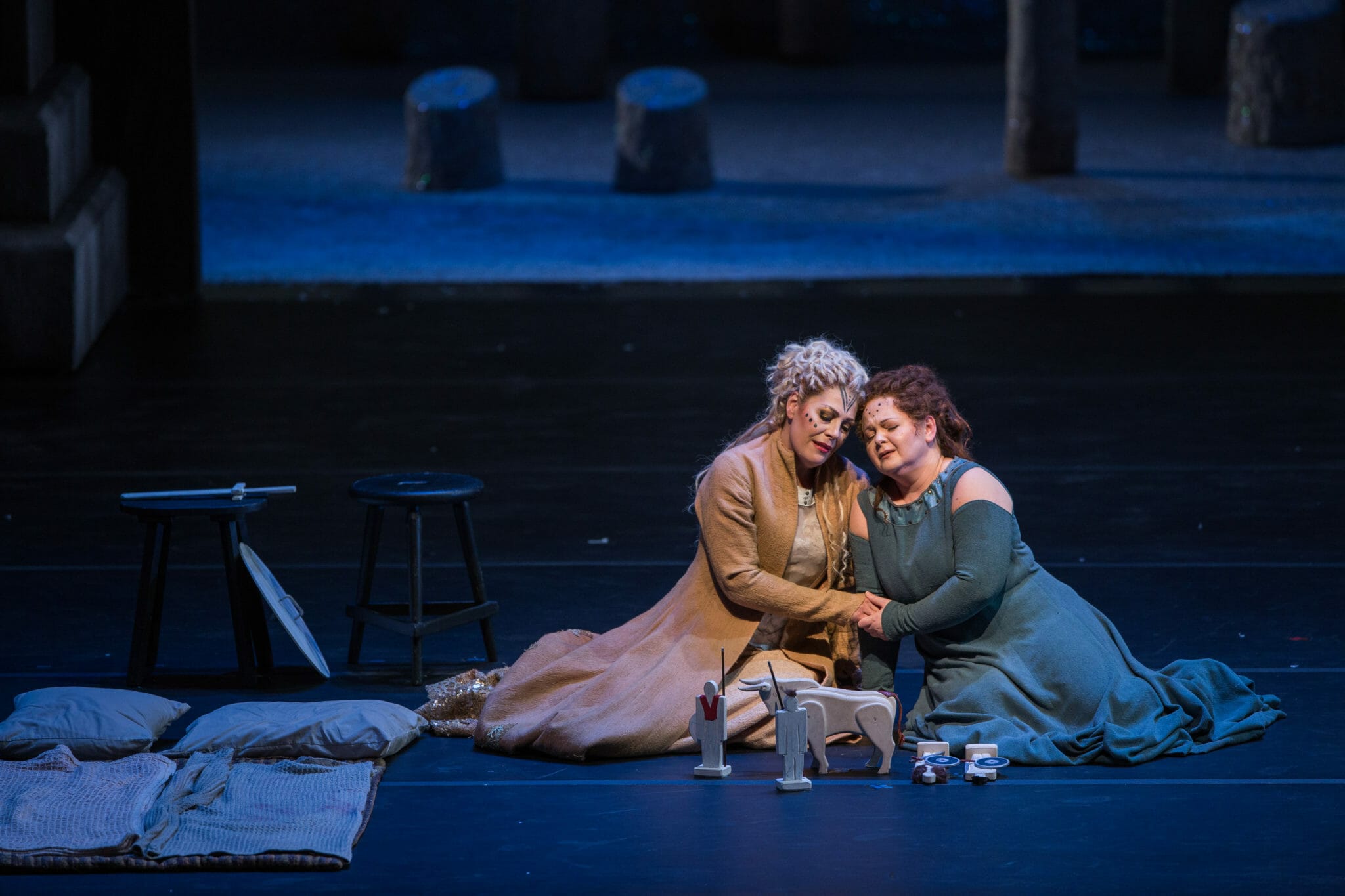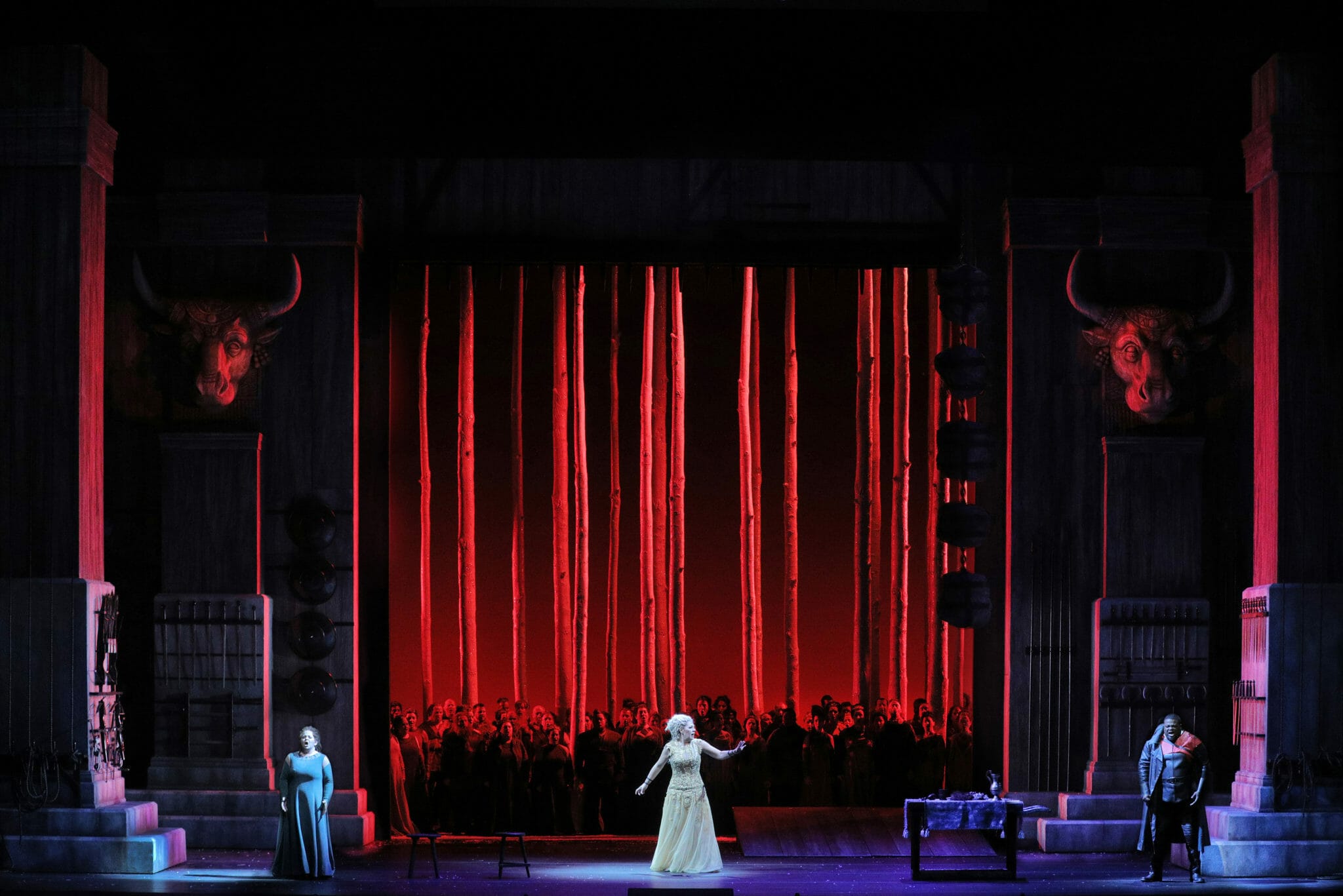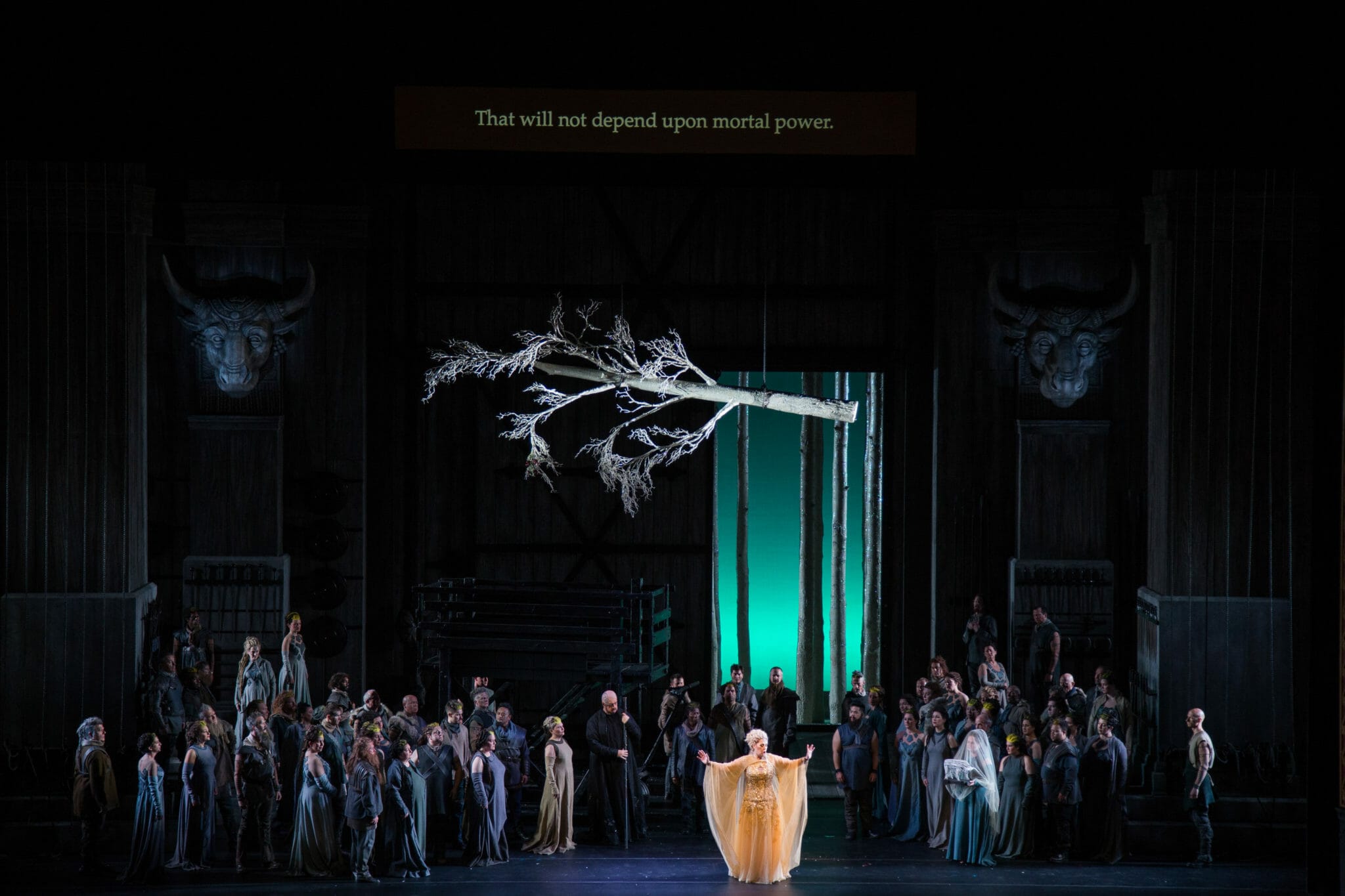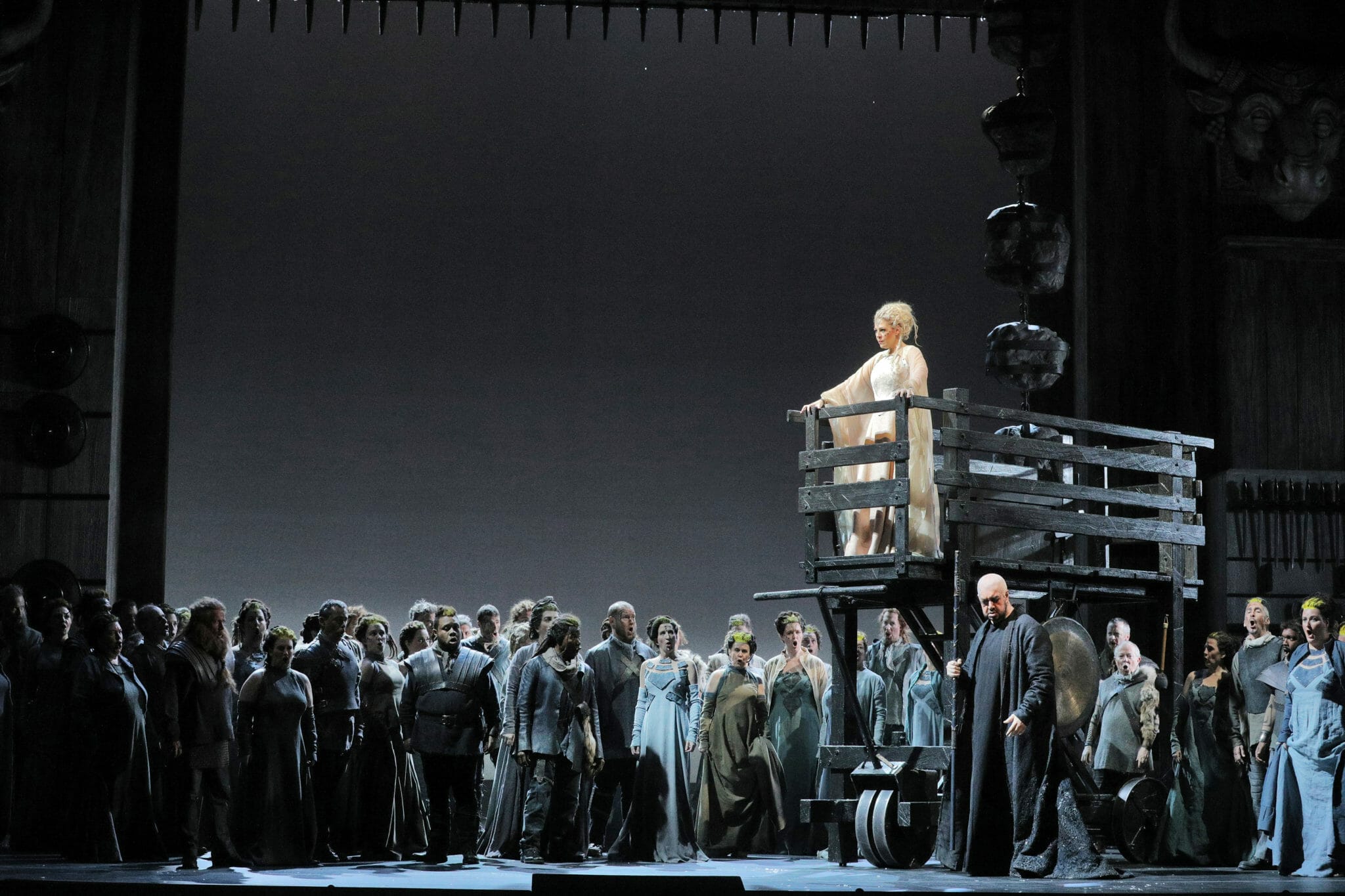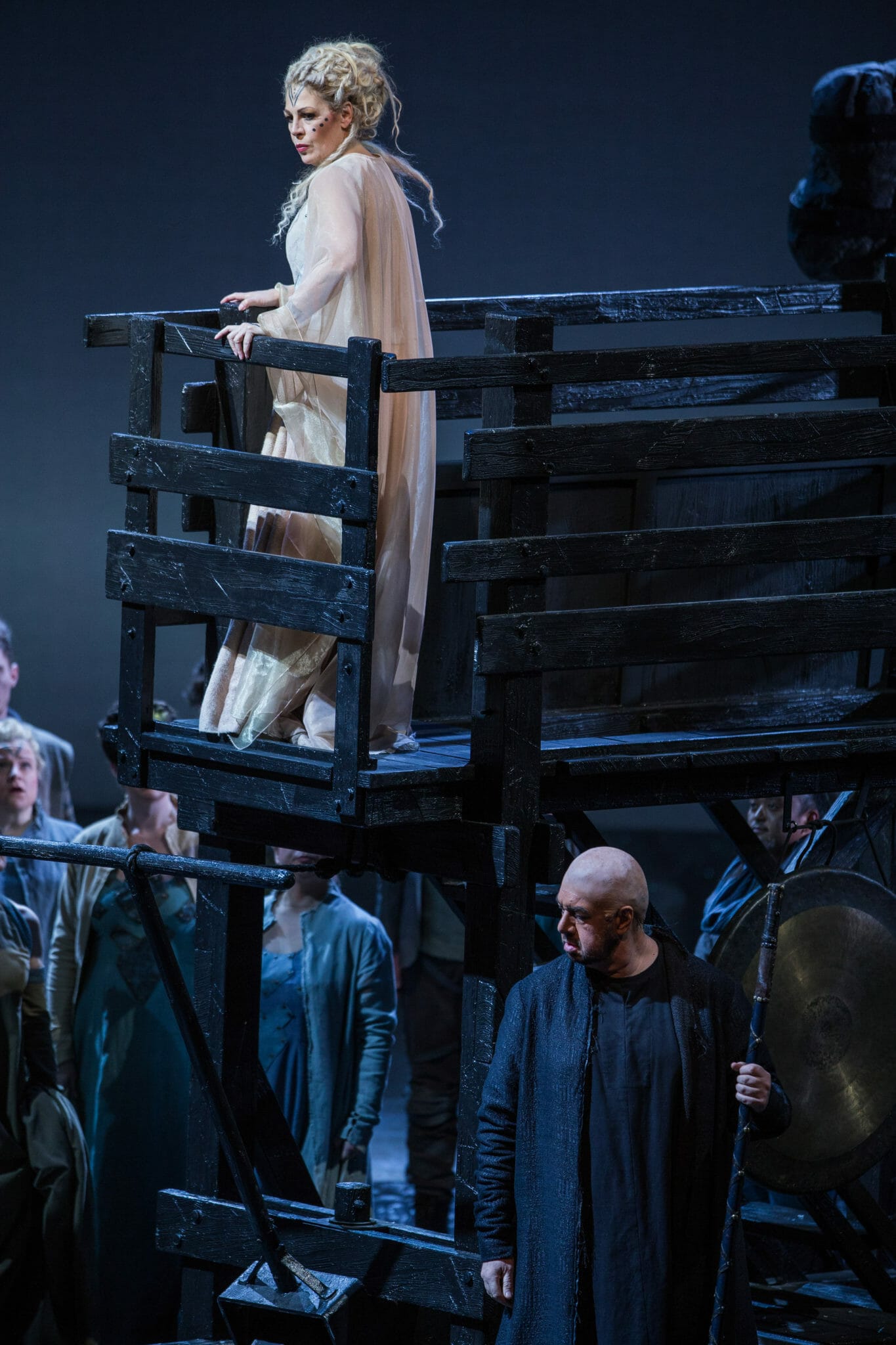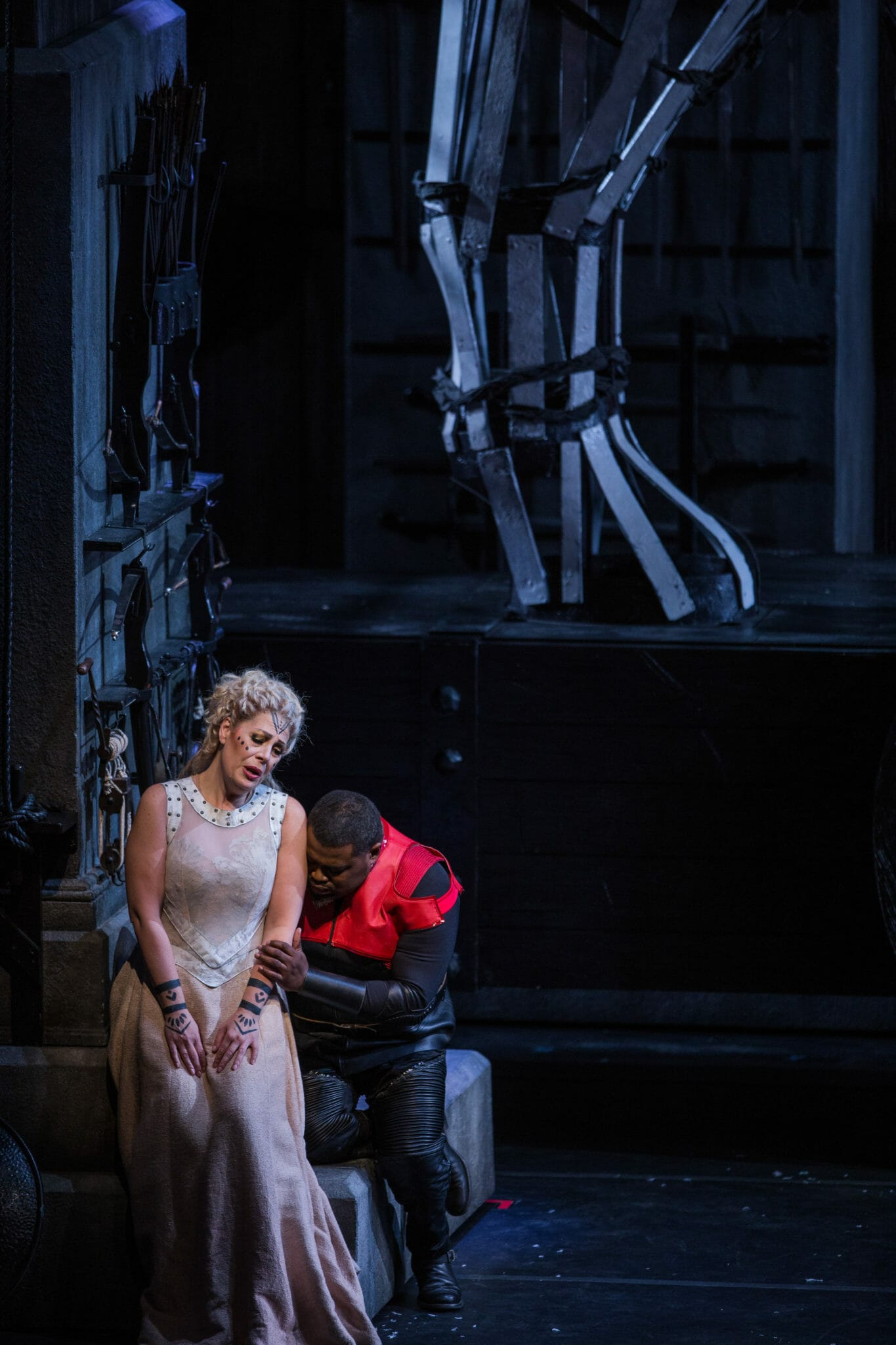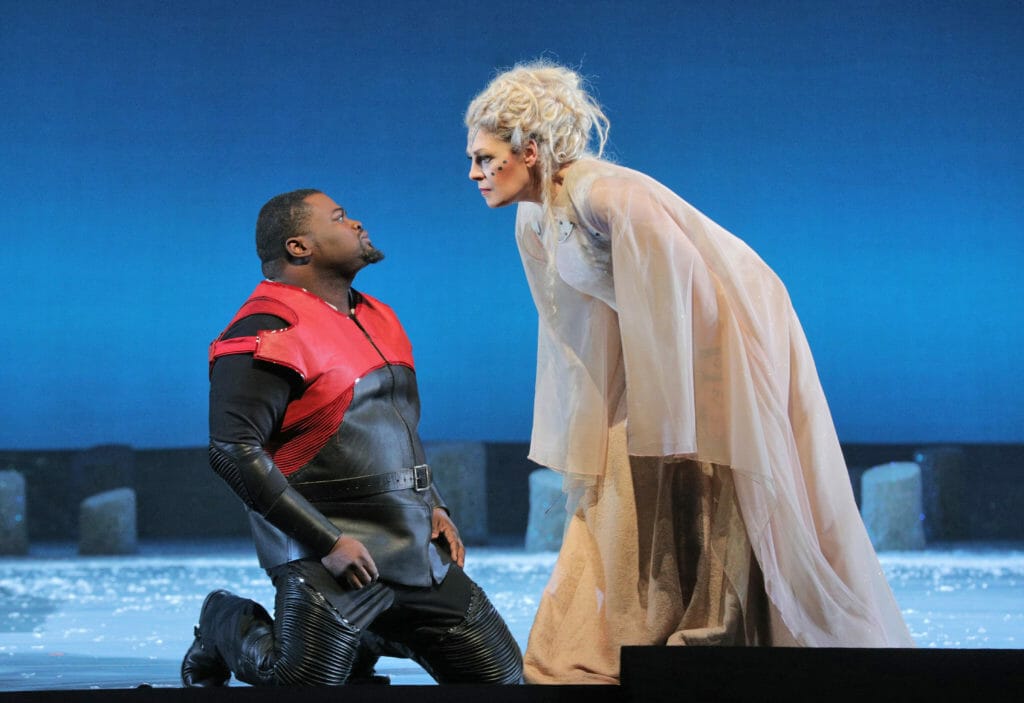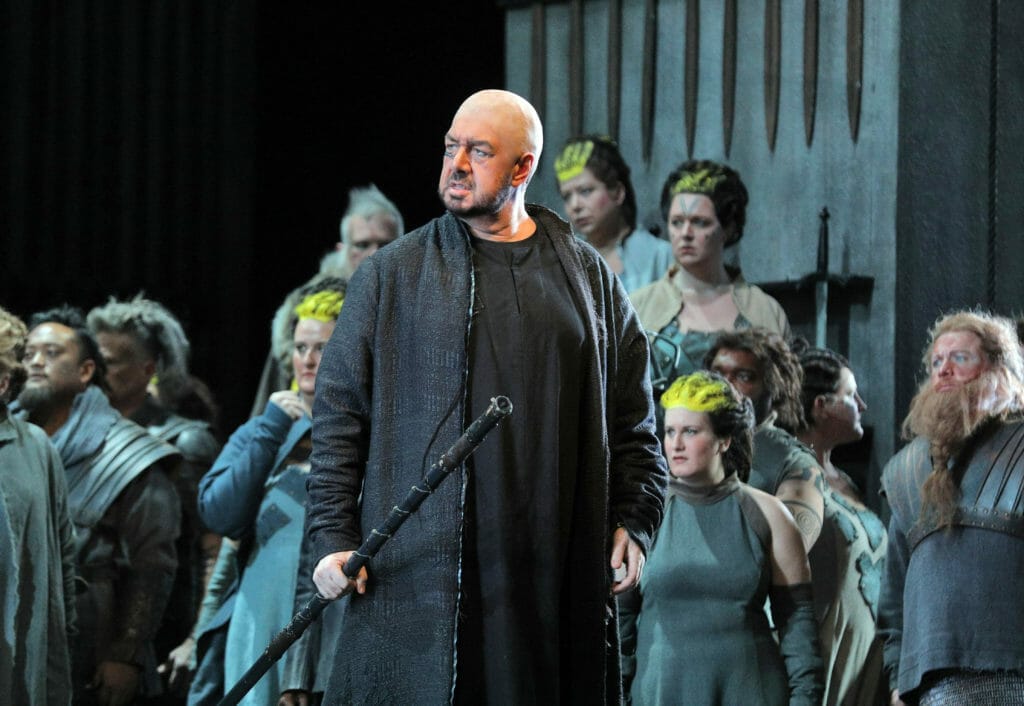Lyric Opera Recreates its Inaugural Opera
Though the overture to Bellini’s NORMA is powerful and a suiting intro to the grand epic story that follows, it doesn’t quite prepare you for the soprano tour de force that is at the heart of Bellini’s 1831 score. This is THE bel canto opera that was the inaugural performance for the Lyric in 1954, and the American debut for the soprano superstar of that time, Maria Callas.
Soprano Sondra Radvanovsky Amazes
American soprano Sondra Radvanovsky in the title role, who has performed at the Lyric on six prior occasions, has what it takes to fill the big shoes of that legendary performance. Her amazing coloratura singing – with orchestra and without—simply dazzles.
It may remind some of their first childhood fascination with fish. How do they get air??—gills instead of a nose? And just how does this soprano re-fill her lungs—or more precisely, when?
With one vocal jeté after another, up and down and up and down with trill thrills galore, Radvanovsky is an absolute powerhouse of vocal range and vocal affect. As compelling as her arias are, the bigger treat seems to be her ability to lean in—and with her co-star mezzo-soprano Elizabeth DeShong as Adalgisa quite literally—and modulate her voice in sweet, sweet duets. Like so many an opera you will find no quick ending here, but know that in some ways the best is for last, as Radvanovsky teams up with her fickle love interest and father to her children, Pollione, also given a compelling performance by tenor Russell Thomas. So many sweet, sweet melodies before, this duet gives so much sumptuous song you may find yourself squinting and straining to let your ears swallow more.
Druid Story with Modern Resonance
As opera stories go, Norma, though grounded in Druid lore, has quite a bit of modern resonance. Norma is supposed to be a chaste priestess who doesn’t mess around. In the pre-story, we learn some flashy Roman, Pollione, had seduced her and left her with two children. Of late he has gone missing. She is the spurned single mom, shouldering a lot. We then learn that he’s taken up with Norma’s very good friend and fellow would- be chaste priestess, Adalgisa, who it seems had fallen for some of his very same lines. The two gal pals’ bonds turn out to be stronger than Pollione’s charms. He is outnumbered.
If this sounds like a daytime soap opera, pinch yourself and remember THIS is the opera that came first, after all, with all the big DRAMA that soaps ever reach for, but alas, can’t quite get to without the amazing score of NORMA and the like.
Around this love story is an itch for war and rebellion. The Druids can’t wait to get rid of the Romans’ yoke, but rely on their priestess Norma to give the big sign from up on high as to WHEN to launch the big battle. Hesitant to war with the father of her children and her lover, she is betraying her own people. That changes in the end, when she decides to immolate herself the good ol Druid way, if lore be real, and into the pyre she goes. Better, this is an ending that takes a LOT of song to reach the finale.
Stagecraft May Distract
Many in the audience seemed to like the set and costumes. Do even a quick Internet search about Druids and you learn that much of what is assumed to be Druid fashions is quite controversial. That said, Wigmaster Sarah Hatten must have had great fun giving most of the Druids dreadlocks. Much is made of Druid tattoos, sending this reviewer back to study notes of the Field Museum’s Tattoo show to see if this had been a main focus of their historical account of the fashion. Costumes by Jessica Jahn included arm and shoulder cut outs for women that you find in today’s fashions, and also what could pass for bikers’ gear and biker style beards. If you blinked a bit, you might think you had somehow landed in Sturgis for the big motorcycle rally.
Set design by David Korins makes great reminders of oak trees in Druid lore. It could be that the oversized metal fixtures are to remind us that this is the dawn of the iron age, but perhaps most iron then was reserved for daggers, flasks and trinkets. It’s unclear, as is the meaning of the two wide-eyed cow heads on the stage, which seem like Elsies being told to “man up”.
All set distractions certainly end in the final scene, when the superb lighting design by Duane Schuler frames the libretto’s affect with great mastery.
NORMA is not to be missed
Who cares about all this extra stuff anyway? Go for the music! This is “bel canto”, aka beautiful song, truly. Soprano Sondra Radvanovsky is but one superstar on the stage. Tenor Russell Thomas doesn’t have the same sized part, but he is of same talent. DeShong as Adalgisa and bass Andrew Silverstrelli, bald for the occasion, do not disappoint. The Chorus under the direction of Michael Black is also quite wonderful.
HIGHLY RECOMMENDED
Want more Lyric Opera? Now you can hear Lyric’s BEL CANTO in entirety on these Picture this Post pages.
Note: An excerpt of this review appears in Theatre in Chicago.
When:
7 performances through February 24
Where:
Lyric’s Civic Opera House
20 North Wacker Drive
Chicago
Tickets:
$49+
To obtain tickets visit Lyric’s website or call the Lyric Box Office at (312) 827-5600.
Slider Photos:
Andrew Cioffi and Cory Weaver

About the Author: Amy Munice
Amy Munice is Editor-in-Chief and Co-Publisher of Picture This Post. She covers books, dance, film, theater, music, museums and travel. Prior to founding Picture This Post, Amy was a freelance writer and global PR specialist for decades—writing and ghostwriting thousands of articles and promotional communications on a wide range of technical and not-so-technical topics.
Amy hopes the magazine’s click-a-picture-to-read-a-vivid-account format will nourish those ever hunting for under-discovered cultural treasures. She especially loves writing articles about travel finds, showcasing works by cultural warriors of a progressive bent, and shining a light on bold, creative strokes by fledgling artists in all genres.

